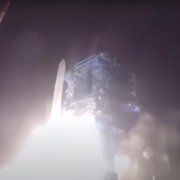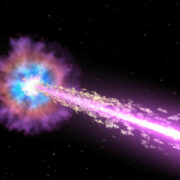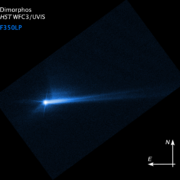
Gaia Reveals Pontus : a New Member of the Galaxy
Our home galaxy the Milky Way is a monster with a ravenous past. In its estimated 12 billion years of existence, our galaxy has swallowed smaller satellite galaxies whole, with collisions resulting in massive rounds of star formation. We see threads of these remnant mergers as streams of stars and clusters, strung out around the Milky Way.

This photo shows the Milky Way as seen by Gaia. The squares represent the locations of globular clusters, the triangles represent the locations of satellite galaxies, and the dots represent stellar streams. These purple dots and squares are objects brought into the Milky Way by the Pontus galaxy merger.
Perhaps most exciting is that this process has not quite finished, and by using data from ESA’s Gaia spacecraft, astronomers can see it taking place. This in turn allows to reconstruct the history of our galaxy, revealing the ‘family tree’ of smaller galaxies that has helped make the Milky Way what it is today.

A recent study looked at hidden stellar streams in Gaia data to find evidence of an ancient relic known as Pontus.
The latest work on this subject comes from Khyati Malhan, a Humboldt Fellow at the Max-Planck-Institut für Astronomie, Heidelberg, Germany, and colleagues. Together, they have analysed data based on looking for the remains of smaller galaxies merging with our own. These can be found in the so-called halo of the Milky Way, which surrounds the disc of younger stars and central bulge of older stars that comprise the more luminous parts of the Milky Way.

The high-speed “Sprint Star” seen in Gaia’s DR2 version.
The latest work on this subject comes from Khyati Malhan, a Humboldt Fellow at the Max-Planck-Institut für Astronomie, Heidelberg, Germany, and colleagues. Together, they have analysed data based on Gaia’s early third data release (EDR3) looking for the remains of smaller galaxies merging with our own. These can be found in the so-called halo of the Milky Way, which surrounds the disc of younger stars and central bulge of older stars that comprise the more luminous parts of the Milky Way.

Anatomy of a collision: How the Milky Way has absorbed small satellite galaxies like Pontus over time
In total they studied 170 globular clusters, 41 stellar streams and 46 satellites of the Milky Way. Plotting them according to their energy and momentum revealed that 25 percent of these objects fall into six distinct groups. Each group is a merger taking place with the Milky Way. There was also a possible seventh merger in the data.
Five had been previously identified on surveys of stars. They are known as Sagittarius, Cetus, Gaia-Sausage/Enceladus, LMS-1/Wukong, and Arjuna/Sequoia/I’itoi. But the sixth was a newly identified merger event. The team called it Pontus, meaning the sea. In Greek mythology, Pontus is the name of one of the first children of Gaia, the Greek goddess of the Earth.This sixth new stream points at a possible satellite galaxy devoured long ago.
Based upon the way Pontus has been pulled apart by the Milky Way, Khyati and colleagues estimate that it probably fell into the Milky Way some eight to ten billion years ago. Four of the other five merger events likely also took place around this time as well. But the sixth event, Sagittarius, is more recent. For context, our solar system formed 4.5 billion years ago.It might have fallen into the Milky Way sometime in the last five to six billion years. As a result, the Milky Way has not yet been able to completely disrupt it.
The Next for Gaia

Gaia
Of course, we’re looking forward to the full Data Release DR3 this year, which was delayed due to the global pandemic. Gaia has thus far lasted well beyond its five year nominal mission and has exceeded expectations. Gaia’s detectors are in good health, and it has more than enough fuel for L2 station-keeping well past late 2024.
Gaia builds on knowledge gathered from the Hipparcos astrometry mission and may one day be followed by the proposed GaiaNIR (Near Infrared) mission.
The discovery of a sixth remnant stream is an amazing find, and is an impressive example of astronomical forensics. This intriguing discovery also serves as a mere hint of what other strange finds await.











Great!
Welcome our new neighbor!